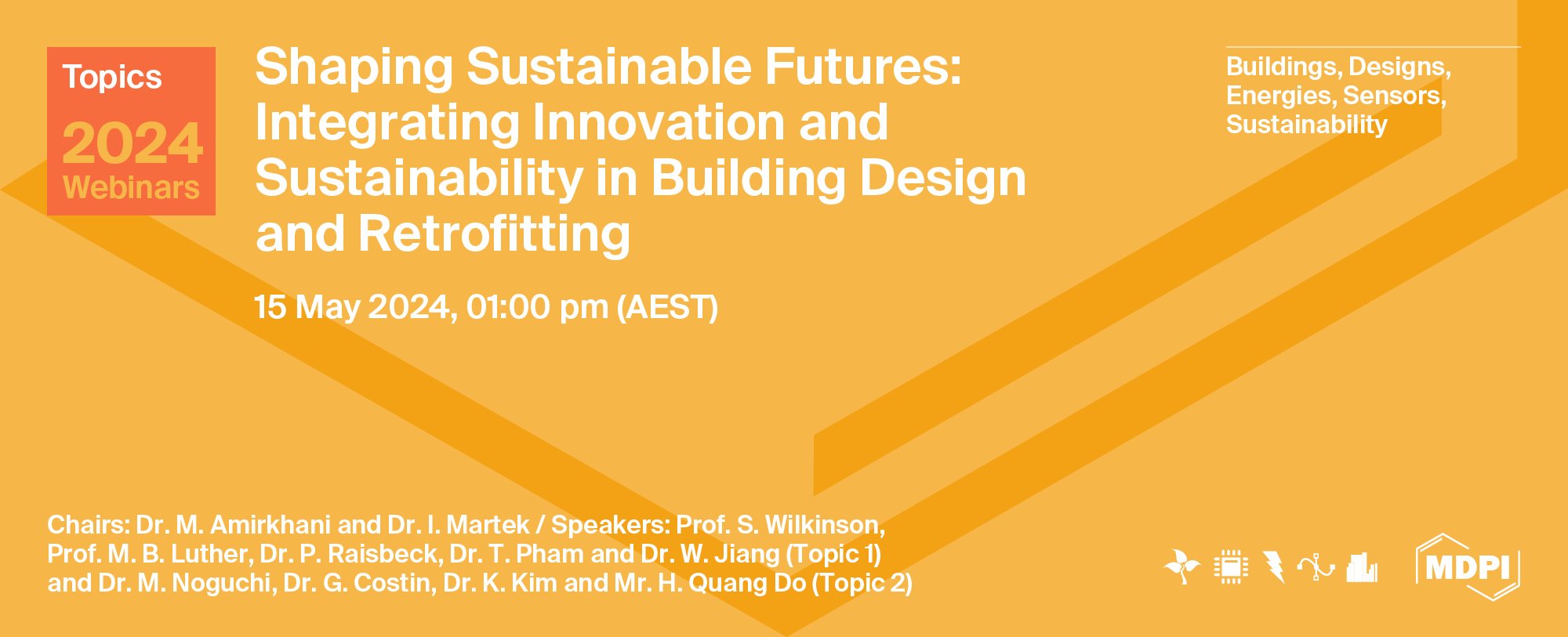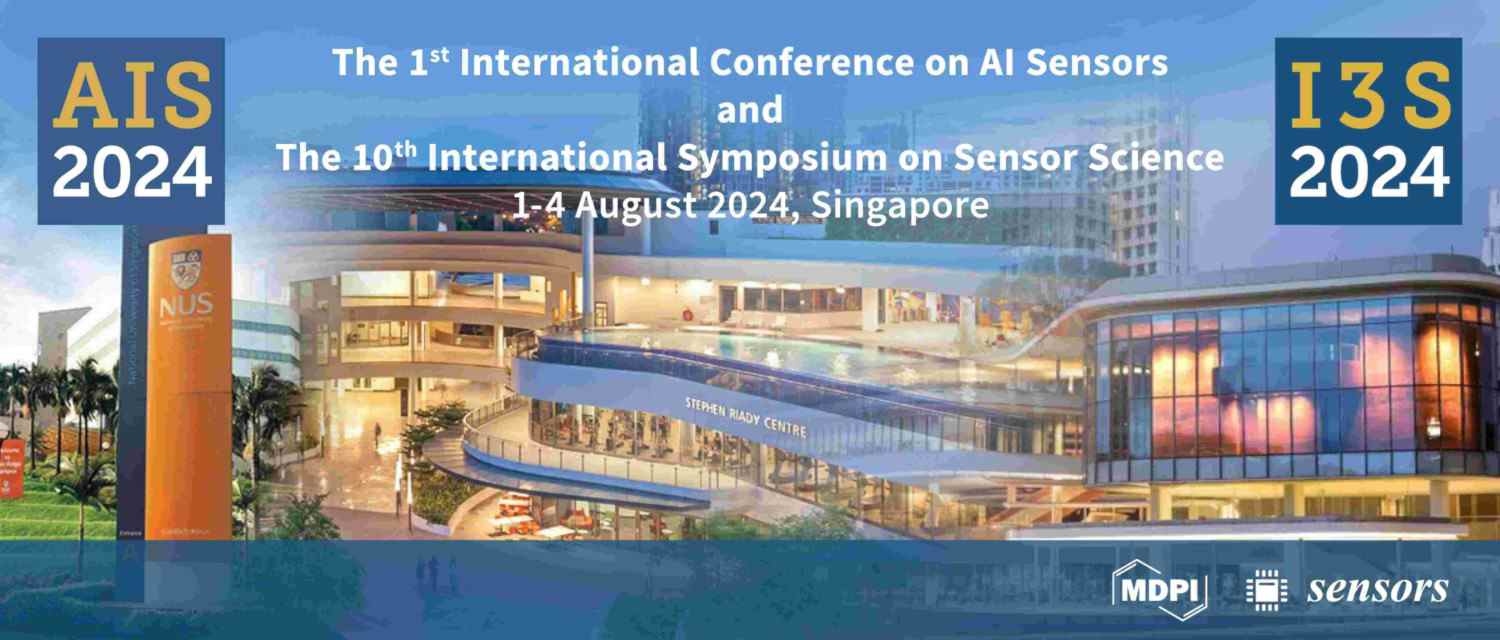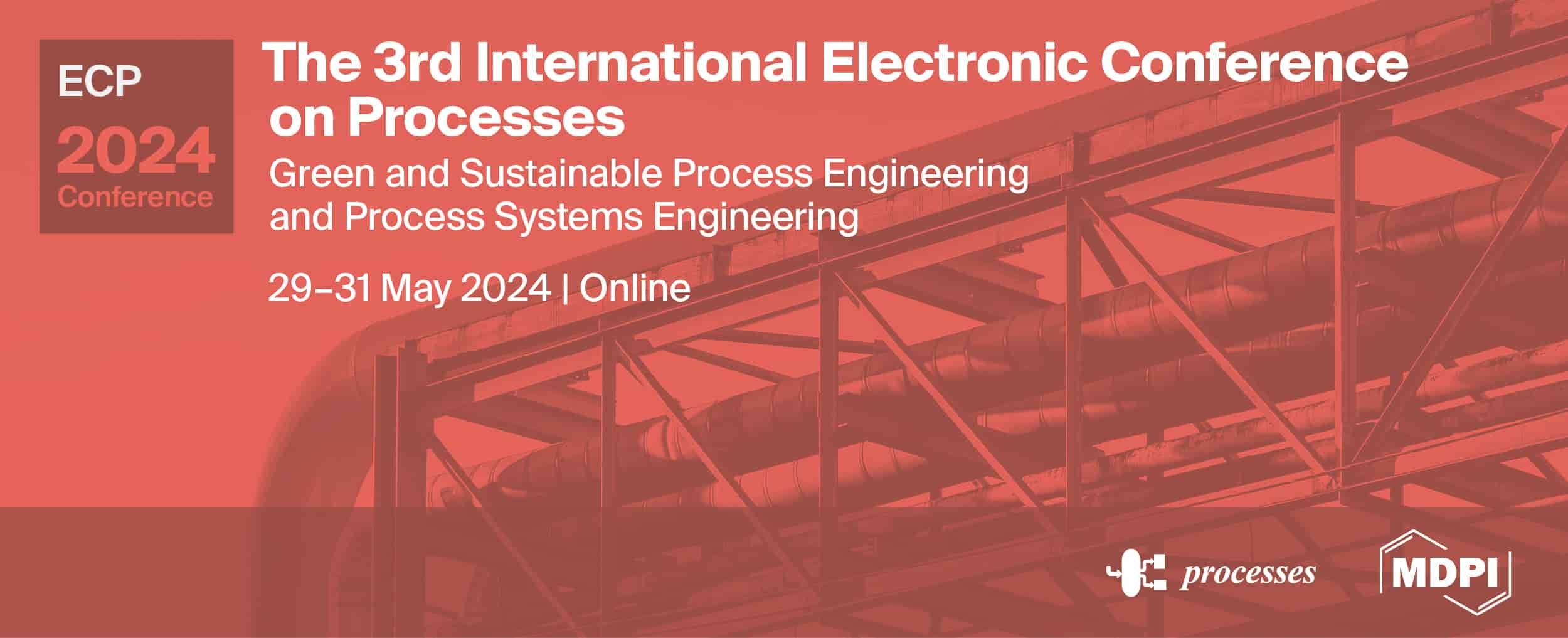-
 Electricity Cost Savings in Energy-Intensive Companies: Optimization Framework and Case Study
Electricity Cost Savings in Energy-Intensive Companies: Optimization Framework and Case Study -
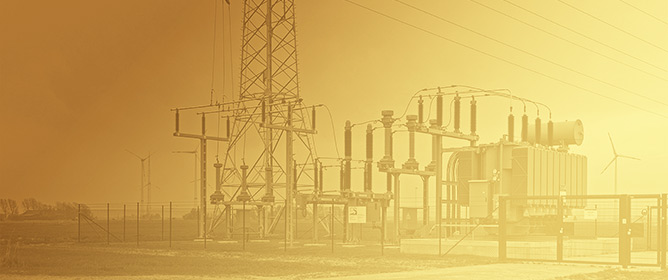 A Composite Index for Tracking the Evolution towards Energy Transition at Urban Scale: The Turin Case Study
A Composite Index for Tracking the Evolution towards Energy Transition at Urban Scale: The Turin Case Study -
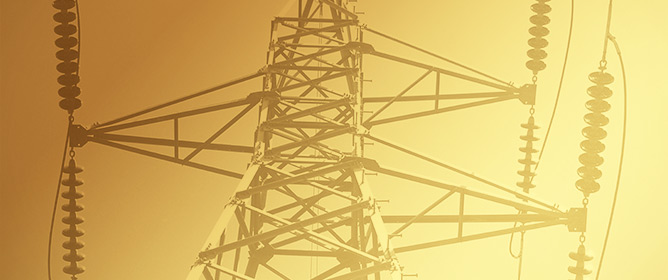 Predictive Energy Management of a Building-Integrated Microgrid: A Case Study
Predictive Energy Management of a Building-Integrated Microgrid: A Case Study -
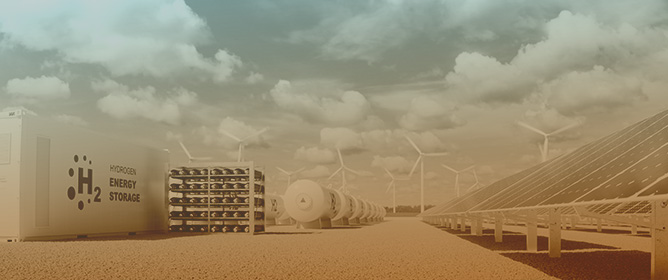 Techno-Economic Planning of a Fully Renewable Energy-Based Autonomous Microgrid with Both Single and Hybrid Energy Storage Systems
Techno-Economic Planning of a Fully Renewable Energy-Based Autonomous Microgrid with Both Single and Hybrid Energy Storage Systems -
 Improving the Methodology for Determining the Biomass/Coal Co-Combustion Ratio: Predictive Modeling of the 14C Activity of Pure Biomass
Improving the Methodology for Determining the Biomass/Coal Co-Combustion Ratio: Predictive Modeling of the 14C Activity of Pure Biomass
Journal Description
Energies
Energies
is a peer-reviewed, open access journal of related scientific research, technology development, engineering policy, and management studies related to the general field of energy, from technologies of energy supply, conversion, dispatch, and final use to the physical and chemical processes behind such technologies. Energies is published semimonthly online by MDPI. The European Biomass Industry Association (EUBIA), Association of European Renewable Energy Research Centres (EUREC), Institute of Energy and Fuel Processing Technology (ITPE), International Society for Porous Media (InterPore), CYTED and others are affiliated with Energies and their members receive a discount on the article processing charges.
- Open Access— free for readers, with article processing charges (APC) paid by authors or their institutions.
- High Visibility: indexed within Scopus, SCIE (Web of Science), Ei Compendex, RePEc, Inspec, CAPlus / SciFinder, and other databases.
- Journal Rank: CiteScore - Q1 (Engineering (miscellaneous))
- Rapid Publication: manuscripts are peer-reviewed and a first decision is provided to authors approximately 16.1 days after submission; acceptance to publication is undertaken in 3.3 days (median values for papers published in this journal in the second half of 2023).
- Recognition of Reviewers: reviewers who provide timely, thorough peer-review reports receive vouchers entitling them to a discount on the APC of their next publication in any MDPI journal, in appreciation of the work done.
- Sections: published in 41 topical sections.
- Testimonials: See what our editors and authors say about Energies.
- Companion journals for Energies include: Fuels, Gases, Nanoenergy Advances and Solar.
Impact Factor:
3.2 (2022);
5-Year Impact Factor:
3.3 (2022)
Latest Articles
Experimental Analysis of the Light Wavelength’s Impact on the Performance of a Silicon Solar Cell
Energies 2024, 17(9), 2090; https://doi.org/10.3390/en17092090 (registering DOI) - 26 Apr 2024
Abstract
The main aim of this article is to analyse the Si solar cell’s behaviour when it is exposed to light of different colours. An experimental work, with 100 experimental tests, was carried out, using an RGB LED. In order to obtain better fitting
[...] Read more.
The main aim of this article is to analyse the Si solar cell’s behaviour when it is exposed to light of different colours. An experimental work, with 100 experimental tests, was carried out, using an RGB LED. In order to obtain better fitting of the characteristic curves’ results, we used a novel discrete model, d1MxP. The obtained results showed that all experimental points of the tests were inside the two triangles that connected the three theoretical primary colours and the three experimental primary colours in the chromaticity diagram. With this diagram, the colour purity could be determined, which presented values between 20% and 60%. The primary colours of the three different LEDs of the light source presented a dominant wavelength that corresponded to the peak wavelengths of the light source spectrum, which showed high purity. However, the obtained results show that mixing colours may not lead to an increase in the cell’s output power. Additionally, an increase in the cell’s temperature was observed, due to the surplus absorbed energy, which was converted into heat, being one of the causes of the cell’s efficiency reduction.
Full article
(This article belongs to the Section A2: Solar Energy and Photovoltaic Systems)
Open AccessReview
Research Progress and Prospect of Condition Assessment Techniques for Oil–Paper Insulation Used in Power Systems: A Review
by
Zaijun Jiang, Xin Li, Heng Zhang, Enze Zhang, Chuying Liu, Xianhao Fan and Jiefeng Liu
Energies 2024, 17(9), 2089; https://doi.org/10.3390/en17092089 (registering DOI) - 26 Apr 2024
Abstract
Oil–paper insulation is the critical insulation element in the modern power system. Under a harsh operating environment, oil–paper insulation will deteriorate gradually, resulting in electrical accidents. Thus, it is important to evaluate and monitor the insulation state of oil–paper insulation. Firstly, this paper
[...] Read more.
Oil–paper insulation is the critical insulation element in the modern power system. Under a harsh operating environment, oil–paper insulation will deteriorate gradually, resulting in electrical accidents. Thus, it is important to evaluate and monitor the insulation state of oil–paper insulation. Firstly, this paper introduces the geometric structure and physical components of oil–paper insulation and shows the main reasons and forms of oil–paper insulation’s degradation. Then, this paper reviews the existing condition assessment techniques for oil–paper insulation, such as the dissolved gas ratio analysis, aging kinetic model, cellulose–water adsorption isotherm, oil–paper moisture balance curve, and dielectric response technique. Additionally, the advantages and limitations of the above condition assessment techniques are discussed. In particular, this paper highlights the dielectric response technique and introduces its evaluation principle in detail: (1) collecting the dielectric response data, (2) extracting the feature parameters from the collected dielectric response data, and (3) establishing the condition assessment models based on the extracted feature parameters and the machine learning techniques. Finally, two full potential studies are proposed, which research hotspots’ oil–paper insulation and the electrical–chemical joint evaluation technique. In summary, this paper concludes the principles, advantages and limitation of the existing condition assessment techniques for oil–paper insulation, and we put forward two potential research avenues.
Full article
(This article belongs to the Special Issue Power Electronic Converter Topologies and Control for Integration of Renewable Energy and Multi-Energy Sources)
Open AccessArticle
Improved Switchable Heat Pipe Based on Adsorption: Against-Gravity Operation and Enhanced Dynamics
by
Simon Boda, Markus Winkler, Robert Schießl, Christian Teicht, Daniel Schwarz, Jan Schipper, Kilian Bartholomé, Olaf Schäfer-Welsen and Sandra Pappert
Energies 2024, 17(9), 2088; https://doi.org/10.3390/en17092088 (registering DOI) - 26 Apr 2024
Abstract
Controlling heat transfer through components with adjustable thermal resistance can be of great benefit in a wide range of applications such as the thermal management of spacecraft or electric vehicles. A novel concept for both thermal switching and thermal regulation is the use
[...] Read more.
Controlling heat transfer through components with adjustable thermal resistance can be of great benefit in a wide range of applications such as the thermal management of spacecraft or electric vehicles. A novel concept for both thermal switching and thermal regulation is the use of a water-loaded adsorbent within a reservoir that a regular heat pipe is expanded with. By reversibly desorbing or adsorbing water, states of low and high thermal resistance can be achieved. This concept has been studied so far only in thermosiphons that rely on gravity support. To expand potential application fields, we successfully investigated the utilization of heat pipes with a capillary structure, achieving against-gravity operation. Adsorption-based heat pipe demonstrators were experimentally examined regarding their characteristic properties. Thermal resistances during the on and off state of 0.25 KW−1 and 6.5 KW−1, respectively, were measured, yielding switching ratios of up to 26. Furthermore, the role of the adsorbent reservoir heat exchanger was examined and found to have a significant potential to yield an improvement with regards to dynamic performance. With an improved demonstrator design, the dynamic performance was enhanced as the hysteresis behavior was reduced and a minimum switching time of 5 min was recorded.
Full article
(This article belongs to the Section J: Thermal Management)
Open AccessArticle
Process Optimization of Pellet Manufacturing from Mixed Materials in Ultrasonic Vibration-Assisted Pelleting
by
Wentao Li, Rongwei Yu, Lina Luo and Hongying Shi
Energies 2024, 17(9), 2087; https://doi.org/10.3390/en17092087 (registering DOI) - 26 Apr 2024
Abstract
Achieving carbon neutrality and alleviating the rural energy predicament are crucial aspects in rural areas, particularly in the severe cold regions of northeast China. Pellets serve as clean, renewable energy sources and are ideal alternative fuels. This study investigated the influencing factors and
[...] Read more.
Achieving carbon neutrality and alleviating the rural energy predicament are crucial aspects in rural areas, particularly in the severe cold regions of northeast China. Pellets serve as clean, renewable energy sources and are ideal alternative fuels. This study investigated the influencing factors and effects of mixed raw materials in ultrasonic vibration-assisted pelleting (UV-A pelleting). Rice straw and corn stover were mixed to produce pellets, and a central composite rotatable design (CCRD) was conducted to analyze the variables and their interactions on pellet density and durability. Mathematical regression models for pellet density and durability were established and then validated through ANOVA analysis. The results showed that all variables significantly affected the density and durability of pellets. The mixing ratio had a greater impact on pellet durability compared to density due to differences in ingredients. The optimal combination of process parameters included a mixing ratio of 25%, molding pressure of 4 MPa, pelleting time of 37 s, and ultrasonic power output at 200 W, resulting in a pellet density of 1301.18 kg/m3 with a durability reaching 94.26%. The desirability value (0.997) under these optimal conditions confirmed the validity of the models; further experiments also verified their effectiveness. The combustion of the optimized pellet was analyzed using thermogravimetric (TG) and derivative thermogravimetric (DTG) analysis in an air atmosphere. Four combustion stages and ignition temperature were provided.
Full article
(This article belongs to the Section B: Energy and Environment)
Open AccessArticle
Systematic Development of Application-Oriented Operating Strategies for the Example of an Industrial Heating Supply System
by
Lukas Theisinger, Michael Frank and Matthias Weigold
Energies 2024, 17(9), 2086; https://doi.org/10.3390/en17092086 (registering DOI) - 26 Apr 2024
Abstract
The ongoing challenge to ensure a sustainable and affordable energy supply forces industrial companies to transform their energy system. This transformation usually leads to an increase in topological complexity, which in turn results in increased operational complexity. Existing approaches from the field of
[...] Read more.
The ongoing challenge to ensure a sustainable and affordable energy supply forces industrial companies to transform their energy system. This transformation usually leads to an increase in topological complexity, which in turn results in increased operational complexity. Existing approaches from the field of supervisory and optimal control are capable of mastering complex operational problems. However, due to the complex and non-transparent implementation, there is still no industrial penetration, which hinders the necessary transformation of energy systems. This work aims at establishing trust in these control approaches and presents a procedure model for the systematic development of application-oriented operating strategies for industrial energy heating systems. It combines research approaches from the fields of sequencing control and approximate MPC to extract rule-based operating strategies, which are inherently easy to understand and implementable. By splitting the procedure model into five phases, expert knowledge can be integrated in a targeted manner. The procedure model is validated by the exemplary application to an industrial heating supply system. As part of an optimization study, the operating strategy developed is compared with both an MPC strategy and a baseline strategy. While the conventional MPC approach represents the upper limit of optimality, the operating strategy developed is able to achieve comparable results. Compared to the baseline strategy, a relative reduction in operating costs of 5.4% to 37.0% is achieved.
Full article
(This article belongs to the Section G: Energy and Buildings)
Open AccessArticle
Assessing the Costs of Commercialising Tidal Energy in the UK
by
Donald R. Noble, Kristofer Grattan and Henry Jeffrey
Energies 2024, 17(9), 2085; https://doi.org/10.3390/en17092085 (registering DOI) - 26 Apr 2024
Abstract
There is a need for increased renewable energy to meet net-zero targets and decarbonise the economy. Harnessing the predictable power of the tides with tidal stream turbines can contribute to this. Tidal energy is a nascent technology with higher costs at present. However,
[...] Read more.
There is a need for increased renewable energy to meet net-zero targets and decarbonise the economy. Harnessing the predictable power of the tides with tidal stream turbines can contribute to this. Tidal energy is a nascent technology with higher costs at present. However, cost reductions have been observed with an increased deployment in other renewable energy technologies that have received financial support, and it is postulated that similar will happen with tidal energy. The first tidal stream projects have been awarded market support in the UK through the Contracts for Difference (CfD) scheme, with almost 100 MW expected to be commissioned by 2028. This work uses learning rates to investigate how much investment in ongoing market support might be needed to achieve cost reductions through subsidised deployment alongside research and innovation. Using a range of informed `what if?’ scenarios, it shows sensitivity to key inputs. The results show that the support needed is most sensitive to the learning rate, reducing it from 15% to 12.5% or 10% doubles or more than quadruples the investment required, respectively. The support is also highly dependent on the starting cost from which learning occurs, taken as the CfD Strike Price in 2025. Varying this between 156 and 220 GBP/MWh results in total investment of GBP 6.7 and 22.3 bn, respectively. Most importantly, a balance is needed between subsidising deployment to drive down costs through learning and funding innovation to maintain a high learning rate.
Full article
(This article belongs to the Section C: Energy Economics and Policy)
Open AccessReview
Industrial Waste Heat Utilization in the European Union—An Engineering-Centric Review
by
Vojtěch Turek, Bohuslav Kilkovský, Ján Daxner, Dominika Babička Fialová and Zdeněk Jegla
Energies 2024, 17(9), 2084; https://doi.org/10.3390/en17092084 (registering DOI) - 26 Apr 2024
Abstract
The efficient utilization of waste heat from industrial processes can provide a significant source of energy savings for production plants, as well as be a driver of sustainable operations and the abatement of emissions. Industrial waste heat usually is contained in liquid or
[...] Read more.
The efficient utilization of waste heat from industrial processes can provide a significant source of energy savings for production plants, as well as be a driver of sustainable operations and the abatement of emissions. Industrial waste heat usually is contained in liquid or gaseous outlet streams. Although the possible ways to utilize waste heat are discussed in a wide variety of papers, these either provide only a general overview of utilization options and opportunities or focus on a narrow range of industrial processes. The aim of the present paper is to discuss the practical aspects of waste heat utilization in the European Union so that the reader can gain perspective on (i) the thermal classification of waste heat, (ii) liquid and gaseous waste streams and their typical temperatures for industrial use cases, (iii) the technical, economic, physical, and environmental aspects barring full utilization of the available waste heat, (iv) waste heat sources in various industries, and (v) standardized equipment and technologies applicable to industrial waste heat utilization, including their advantages, disadvantages, and weak points.
Full article
(This article belongs to the Collection Advances in Heat Transfer Enhancement)
Open AccessArticle
Numerical Simulation of Fracturing Fluid Storage in Shale Reservoirs Based on Experimental Measurements of Stress Sensitivity of Hydraulic Fracture Network Conductivity
by
Tianhao Wang and Fujian Zhou
Energies 2024, 17(9), 2083; https://doi.org/10.3390/en17092083 (registering DOI) - 26 Apr 2024
Abstract
Hydraulic fracturing is used in shale reservoir production, with low flowback rates and a large amount of fracturing fluid retained inside the reservoir. In this study, a stress sensitivity analysis experiment on the fracture inflow capacity was implemented to investigate the relationship between
[...] Read more.
Hydraulic fracturing is used in shale reservoir production, with low flowback rates and a large amount of fracturing fluid retained inside the reservoir. In this study, a stress sensitivity analysis experiment on the fracture inflow capacity was implemented to investigate the relationship between the hydraulic fracture (HF) and natural fracture (NF) inflow capacities and effective stress. A three-dimensional shale reservoir model was also constructed to couple the experimentally obtained laws with the numerical model to investigate the effects of the connection and closure of the fracture network on the retention of the fracturing fluid. The results show that the stress sensitivity of natural fractures is two orders of magnitude higher than that of hydraulic fractures. The seepage-absorption effect of capillary forces is not the whole reason for the large amount of fracturing fluid retention. The closure of the fracture network formed by natural and hydraulic fractures during the production process led to the storage of a large amount of fracturing fluid, and this process maintained the stability of the water production rate during the steady water production period.
Full article
(This article belongs to the Section H: Geo-Energy)
Open AccessArticle
Research on Multi-Objective Optimization Design of University Student Center in China Based on Low Energy Consumption and Thermal Comfort
by
Ming Liu, Yufei Que, Nanxin Yang, Chongyi Yan and Qibo Liu
Energies 2024, 17(9), 2082; https://doi.org/10.3390/en17092082 (registering DOI) - 26 Apr 2024
Abstract
Ensuring optimal building performance is vital for enhancing student activity comfort and fostering energy-saving initiatives toward low-carbon objectives. This paper focuses on university student centers in China, aiming to diminish building energy consumption while enhancing indoor thermal comfort. Parametric modeling of typical cases
[...] Read more.
Ensuring optimal building performance is vital for enhancing student activity comfort and fostering energy-saving initiatives toward low-carbon objectives. This paper focuses on university student centers in China, aiming to diminish building energy consumption while enhancing indoor thermal comfort. Parametric modeling of typical cases is executed using the Grasshopper 1.0.0007 software package, and the simulation of building energy consumption and indoor thermal comfort relies on the Ladybug and Honeybee plug-in. Employing a multi-objective optimization design method and the Octopus multi-objective optimization algorithm, this study integrates numerical simulations and on-site surveys to analyze how factors like building form, orientation, envelope structure, and others impact the indoor and outdoor environment. A comprehensive optimization design approach is implemented for the building’s exterior components, including the walls, windows, roof, and shading system. After conducting a comparative analysis of the annual comprehensive energy consumption and indoor thermal comfort before and after the optimization plan, it is determined that implementing these measures reduces the annual comprehensive energy consumption of the building under study by 58.8% and extends the duration of indoor thermal comfort by 53.0%. This study presents a practical optimization design methodology for university student center architecture in China, aiding architects in decision making and advocating for energy-efficient building designs.
Full article
(This article belongs to the Special Issue Optimizing Energy Efficiency and Thermal Comfort in Building)
►▼
Show Figures
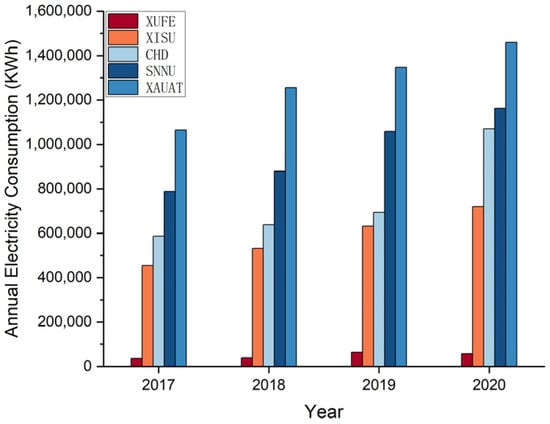
Figure 1
Open AccessArticle
Experimental Study on Two-Phase Countercurrent Flow Limitation in Horizontal Circular Pipes
by
Xixi Zhu, Chende Xu, Mingzhou Gu and Naihua Wang
Energies 2024, 17(9), 2081; https://doi.org/10.3390/en17092081 - 26 Apr 2024
Abstract
The two-phase countercurrent flow limitation (CCFL) in horizontal channels is important in relation to nuclear reactor safety. In this study, we aim to investigate the CCFL characteristics and the flow behaviors in horizontal circular pipes with small diameters. The effects of pipe diameter
[...] Read more.
The two-phase countercurrent flow limitation (CCFL) in horizontal channels is important in relation to nuclear reactor safety. In this study, we aim to investigate the CCFL characteristics and the flow behaviors in horizontal circular pipes with small diameters. The effects of pipe diameter and the water head in the upper plenum on CCFL characteristics are experimentally studied. An image-processing technique and statistical treatments are implemented to analyze the horizontal countercurrent flow. The results show that the CCFL characteristics for the horizontal circular pipes with small diameters can be well correlated using the dimensionless parameters, which are based on adding fluid viscosity to the Wallis parameters. The CCFL characteristics are significantly affected by the pipe diameter and are slightly affected by the water head above the horizontal pipe. The gas–liquid interface fluctuates with certain periods, and flow pattern transitions happen in the horizontal air–water countercurrent flow. As the air flow rate increases, the occurrence location of the liquid slug appears to shift towards the water entrance. In addition, the further away from the water entrance, the lower the average of liquid holdup.
Full article
Open AccessArticle
Numerical Modeling of Non-Isothermal Laminar Flow and Heat Transfer of Paraffinic Oil with Yield Stress in a Pipe
by
Uzak Zhapbasbayev, Timur Bekibayev, Maksim Pakhomov and Gaukhar Ramazanova
Energies 2024, 17(9), 2080; https://doi.org/10.3390/en17092080 - 26 Apr 2024
Abstract
This paper presents the results of a study on the non-isothermal laminar flow and heat transfer of oil with Newtonian and viscoplastic rheologies. Heat exchange with the surrounding environment leads to the formation of a near-wall zone of viscoplastic fluid. As the flow
[...] Read more.
This paper presents the results of a study on the non-isothermal laminar flow and heat transfer of oil with Newtonian and viscoplastic rheologies. Heat exchange with the surrounding environment leads to the formation of a near-wall zone of viscoplastic fluid. As the flow proceeds, the transformation of a Newtonian fluid to a viscoplastic state occurs. The rheology of the Shvedoff–Bingham fluid as a function of temperature is represented by the effective molecular viscosity apparatus. A numerical solution to the system of equations of motion and heat transfer was obtained using the Semi-Implicit Method for Pressure-Linked Equations (SIMPLE) algorithm. The calculated data are obtained at Reynolds number Re from 523 to 1046, Bingham number Bn from 8.51 to 411.16, and Prandl number Pr = 45. The calculations’ novelty lies in the appearance of a “stagnation zone” in the near-wall zone and the pipe cross-section narrowing. The near-wall “stagnation zone” is along the pipe’s radius from r/R = 0.475 to r/R = 1 at Re = 523, Bn = 411.16, Pr = 45, u1 = 0.10 m/s, t1 = 25 °C, and tw = 0 °C. The influence of the heat of phase transition of paraffinic oil on the development of flow and heat transfer characteristics along the pipe length is demonstrated.
Full article
(This article belongs to the Special Issue Turbulence and Fluid Mechanic)
Open AccessReview
A Mini Review on Sewage Sludge and Red Mud Recycling for Thermal Energy Storage
by
Yaxuan Xiong, Aitonglu Zhang, Yanqi Zhao, Qian Xu and Yulong Ding
Energies 2024, 17(9), 2079; https://doi.org/10.3390/en17092079 - 26 Apr 2024
Abstract
Sewage sludge and red mud, as common industrial waste, have become a research hotspot in the field of achieving carbon peaking and carbon neutrality, reducing carbon emissions, and solving environmental problems. However, their treatment and disposal have always been a difficult problem in
[...] Read more.
Sewage sludge and red mud, as common industrial waste, have become a research hotspot in the field of achieving carbon peaking and carbon neutrality, reducing carbon emissions, and solving environmental problems. However, their treatment and disposal have always been a difficult problem in the environmental field. Utilizing these two materials for thermal energy storage can not only improve energy utilization efficiency but also further reduce carbon emissions during their treatment process, providing a new approach for sustainable development in the industrial sector. This article summarizes the research progress for the resource recovery of sewage sludge and red mud for direct thermal energy recovery and composite phase change energy storage. After proper treatment, sludge and red mud can be directly used as energy storage materials. In addition, sludge and red mud can be combined with phase change materials to prepare composite materials with an excellent energy storage performance. This composite has broad application prospects in fields such as solar energy utilization and building energy efficiency. However, there are still some challenges and issues in this resource recovery and utilization, such as potential environmental pollution during the treatment process, the long-term stability of energy storage materials, and cost-effectiveness, which require further research and resolution. The purpose of this paper is to evaluate the potential of sewage sludge and red mud as energy storage materials, to explore their feasibility and advantages in practical applications, and to reveal the research progress, technical challenges, and future development directions of these two materials in the field of thermal energy storage.
Full article
(This article belongs to the Special Issue Advanced Applications of Solar and Thermal Storage Energy)
Open AccessArticle
Experimental Study on the Effect of Mixed Thermodynamic Inhibitors with Different Concentrations on Natural Gas Hydrate Synthesis
by
Hengjie Luan, Mingkang Liu, Qinglin Shan, Yujing Jiang, Peng Yan and Xiaoyu Du
Energies 2024, 17(9), 2078; https://doi.org/10.3390/en17092078 - 26 Apr 2024
Abstract
Natural gas hydrate (NGH) is a potential future energy resource. More than 90% of NGH resources exist in the pore medium of seafloor sediments. During the development of deep-sea oil and gas fields, wellbore pipelines are often clogged due to the synthesis of
[...] Read more.
Natural gas hydrate (NGH) is a potential future energy resource. More than 90% of NGH resources exist in the pore medium of seafloor sediments. During the development of deep-sea oil and gas fields, wellbore pipelines are often clogged due to the synthesis of gas hydrates, and the addition of thermodynamic inhibitors is a common solution to prevent hydrate synthesis. In this paper, the effects of two single inhibitors, sodium chloride and ethylene glycol, as well as hybrid inhibitors combining these two inhibitors on the synthesis of methane hydrates were investigated using the self-developed one-dimensional gas hydrate exploitation simulation test apparatus. The effects of single and hybrid inhibitors were investigated in terms of the hydrate synthesis volume and gas–water two-phase conversion rate. The results show that the hybrid inhibitor has a better inhibitory effect on hydrate synthesis with the same initial synthesis driving force. When the concentration of inhibitors is low, salt inhibitors can have a better inhibitory effect than alcohol inhibitors. However, in the mixed inhibitor experiment, increasing the proportion of ethylene glycol in the mixed inhibitor can more effectively inhibit the synthesis of hydrates than increasing the proportion of sodium chloride in the mixed inhibitor.
Full article
(This article belongs to the Special Issue Multiscale and Multidisciplinary Studies of Gas Hydrate Formation, Dissociation and Dissolution Processes)
Open AccessArticle
Environmental Impact of Enhanced Geothermal Systems with Supercritical Carbon Dioxide: A Comparative Life Cycle Analysis of Polish and Norwegian Cases
by
Magdalena Strojny, Paweł Gładysz, Trond Andresen, Leszek Pająk, Magdalena Starczewska and Anna Sowiżdżał
Energies 2024, 17(9), 2077; https://doi.org/10.3390/en17092077 - 26 Apr 2024
Abstract
Low-carbon electricity and heat production is essential for keeping the decarbonization targets and climate mitigation goals. Thus, an accurate understanding of the potential environmental impacts constitutes a key aspect not only for the reduction in greenhouse gas emissions but also for other environmental
[...] Read more.
Low-carbon electricity and heat production is essential for keeping the decarbonization targets and climate mitigation goals. Thus, an accurate understanding of the potential environmental impacts constitutes a key aspect not only for the reduction in greenhouse gas emissions but also for other environmental categories. Life cycle assessment allows us to conduct an overall evaluation of a given process or system through its whole lifetime across various environmental indicators. This study focused on construction, operation and maintenance, and end-of-life phases, which were analyzed based on the ReCiPe 2016 method. Within this work, authors assessed the environmental performance of one of the renewable energy sources—Enhanced Geothermal Systems, which utilize supercritical carbon dioxide as a working fluid to produce electricity and heat. Heat for the process is extracted from hot, dry rocks, typically located at depths of approximately 4–5 km, and requires appropriate stimulation to enable fluid flow. Consequently, drilling and site preparation entail significant energy and material inputs. This stage, based on conducted calculations, exhibits the highest global warming potential, with values between 5.2 and 30.1 kgCO2eq/MWhel, corresponding to approximately 65%, 86%, and 94% in terms of overall impacts for ecosystems, human health, and resources categories, respectively. Moreover, the study authors compared the EGS impacts for the Polish and Norwegian conditions. Obtained results indicated that due to much higher electricity output from the Norwegian plant, which is sited offshore, the environmental influence remains the lowest, at a level of 11.9 kgCO2eq/MWhel. Polish cases range between 38.7 and 54.1 kgCO2eq/MWhel of global warming potential in terms of electricity production. Regarding power generation only, the impacts in the case of the Norwegian facility are two to five times lower than for the installation in the Polish conditions.
Full article
(This article belongs to the Section B: Energy and Environment)
Open AccessArticle
Effect of Size and Morphology of Different ZnO Nanostructures on the Performance of Dye-Sensitized Solar Cells
by
Sunandan Baruah, Rakesh A. Afre and Diego Pugliese
Energies 2024, 17(9), 2076; https://doi.org/10.3390/en17092076 - 26 Apr 2024
Abstract
In this study, the influence of zinc oxide (ZnO) nanostructures with various morphologies on the performance of dye-sensitized solar cells (DSSCs) was investigated. Photo-electrodes were fabricated incorporating ZnO transport layers of distinct nanoscale morphologies—namely nanoparticles, microballs, spiky microballs, belts, and triangles—and their respective
[...] Read more.
In this study, the influence of zinc oxide (ZnO) nanostructures with various morphologies on the performance of dye-sensitized solar cells (DSSCs) was investigated. Photo-electrodes were fabricated incorporating ZnO transport layers of distinct nanoscale morphologies—namely nanoparticles, microballs, spiky microballs, belts, and triangles—and their respective current–voltage characteristics were evaluated. It was observed that the DSSCs employing the triangular ZnO nanostructures, with a side length of approximately 30 nm, achieved the highest power conversion efficiency of 2.62%. This was closely followed by the DSSCs using spherical nanoparticles with an average diameter of approximately 20 nm, yielding an efficiency of 2.54%. In contrast, the efficiencies of DSSCs with microball and spiky microball ZnO nanostructures were significantly lower, measuring 0.31 and 1.79%, respectively. The reduction in efficiency for the microball-based DSSCs is attributed to the formation of micro-cracks within the thin film during the fabrication process. All DSSC configurations maintained a uniform active area of 4 mm². Remarkably, the highest fill factor of 59.88% was recorded for DSSCs utilizing the triangular ZnO morphology, with the spherical nanoparticles attaining a marginally lower fill factor of 59.38%. This investigation corroborates the hypothesis that reduced particle size in the transport layer correlates with enhanced DSSC performance, which is further amplified when the nanoparticles possess pointed geometries that induce strong electric fields due to elevated charge concentrations.
Full article
(This article belongs to the Special Issue Advanced Materials and Methods for Energy Conversion, Harvesting, and Storage)
Open AccessArticle
A Model-Free Deep Reinforcement Learning-Based Approach for Assessment of Real-Time PV Hosting Capacity
by
Jude Suchithra, Duane A. Robinson and Amin Rajabi
Energies 2024, 17(9), 2075; https://doi.org/10.3390/en17092075 - 26 Apr 2024
Abstract
Assessments of the hosting capacity of electricity distribution networks are of paramount importance, as they facilitate the seamless integration of rooftop photovoltaic systems into the grid, accelerating the transition towards a more carbon neutral and sustainable system. This paper employs a deep reinforcement
[...] Read more.
Assessments of the hosting capacity of electricity distribution networks are of paramount importance, as they facilitate the seamless integration of rooftop photovoltaic systems into the grid, accelerating the transition towards a more carbon neutral and sustainable system. This paper employs a deep reinforcement learning-based approach to evaluate the real-time hosting capacity of low voltage distribution networks in a model-free manner. The proposed approach only requires real-time customer voltage data and solar irradiation data to provide a fast and accurate estimate of real-time hosting capacity at each customer connection point. This study addresses the imperative for accurate electrical models, which are frequently unavailable, in evaluating the hosting capacity of electricity distribution networks. To meet this challenge, the proposed approach utilizes a deep neural network-based, data-driven model of a low-voltage electricity distribution network. This proposed methodology incorporates model-free elements, enhancing its adaptability and robustness. In addition, a comparative analysis between model-based and model-free hosting capacity assessment methods is presented, highlighting their respective strengths and weaknesses. The utilization of the proposed hosting capacity estimation model enables distribution network service providers to make well-informed decisions regarding grid planning, leading to cost minimization.
Full article
(This article belongs to the Special Issue Net-Zero Energy Industry: Renewable Energies, Microgrids, Hydrogen, Electrification of Transportation and Heating)
►▼
Show Figures
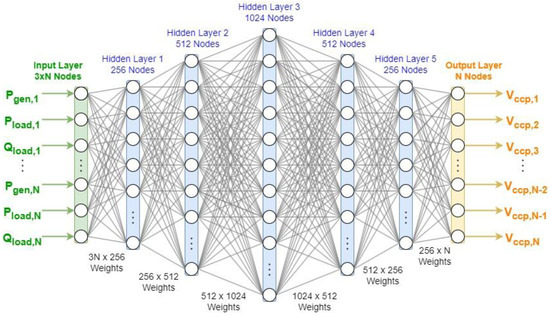
Figure 1
Open AccessArticle
Performance Analysis of Wave Rotor Combustor Integration into Baseline Engines: A Comparative Study of Pressure-Gain and Work Cycles
by
Renchuan Zheng, Erlei Gong, Jianzhong Li, Qian Yao and Zhaolong Nie
Energies 2024, 17(9), 2074; https://doi.org/10.3390/en17092074 - 26 Apr 2024
Abstract
This study presents two concepts for integrating a wave rotor combustor (WRC) into a baseline engine: the wave rotor pressure-gain cycle (WRPGC) and the wave rotor work cycle (WRWC). Performance parameters were calculated under different thermodynamic cycles, and a comparative analysis of the
[...] Read more.
This study presents two concepts for integrating a wave rotor combustor (WRC) into a baseline engine: the wave rotor pressure-gain cycle (WRPGC) and the wave rotor work cycle (WRWC). Performance parameters were calculated under different thermodynamic cycles, and a comparative analysis of the thermodynamic cycles was conducted, considering both the ideal- and actual-loss conditions. Furthermore, the impact of the WRC precompression ratio, turbine inlet temperature, and fixed peak cycle temperature on the thermodynamic-cycle performance was investigated. The results indicate that embedding a WRC into a baseline engine with a compressor pressure ratio higher than 24.0 does not lead to an improvement in the thermal efficiency. However, under a baseline engine pressure ratio of 3.6, the actual-loss WRC cycle achieves efficiency improvements of 40.5% and 49.5% in the WRPGC and WRWC, respectively, compared to the baseline engine cycle. Increasing the wave rotor precompression ratio or the turbine inlet temperature ratio results in greater performance improvements for the WRWC compared to the WRPGC. When the peak cycle temperature of the wave rotor is fixed, there exists a narrow pressure ratio range wherein the WRPGC outperforms the WRWC. Therefore, the WRPGC is more suitable for embedment in baseline engines with lower pressure ratios.
Full article
(This article belongs to the Special Issue Novel Method, Optimization and Applications of Thermodynamic Cycles)
Open AccessArticle
Study on the Influence of Circulating Water Bypass on the Thermal and Anti-Freezing Characteristics of High-Level Wet Cooling Tower
by
Zhonghua Wang, Zenggang Yue, Wei Wang, Chenghui Ma, Xiaoguang Li, Changmin Guo and Yuanbin Zhao
Energies 2024, 17(9), 2073; https://doi.org/10.3390/en17092073 - 26 Apr 2024
Abstract
When heating units are operated in winter, the extreme conditions, such as deep peak regulation and large extraction, can easily lead to a low unit load and severe icing in the wet cooling tower, which threatens the safe operation of the unit. Therefore,
[...] Read more.
When heating units are operated in winter, the extreme conditions, such as deep peak regulation and large extraction, can easily lead to a low unit load and severe icing in the wet cooling tower, which threatens the safe operation of the unit. Therefore, it is necessary to study the anti-freezing characteristics of the wet cooling tower. In this paper, a three-dimensional numerical model of a high-level, natural draft wet cooling tower is developed based on the constant heat load method. The influence of withdrawing a certain percentage of circulating water into the bypass on the cooling performance and anti-freezing characteristics of the high-level, natural draft wet cooling tower is investigated. The results show that as the percentage of circulating water bypass extraction increases, the temperature drop of circulating water in the tower continues to increase, but the lowest and the average water temperatures at the bottom of the packing continue to decrease. At the same time, the amount of circulating water entering the tower decreases, the pressure difference between the inside and outside of the tower under the same environmental conditions decreases, and the pumping force of the cooling tower decreases. If the circulating water bypass extraction percentage is less than 10%, it can prevent the circulating water from freezing at the bottom of the packing and, at the same time, try to reduce the temperature of the circulating water entering the condenser to ensure the efficiency of the unit.
Full article
(This article belongs to the Section J1: Heat and Mass Transfer)
Open AccessArticle
Study on Hydrocarbon Fuel Ignition Characterization Based on Optimized BP Neural Network
by
Zhihan Chen, Lulin Wei, Hongan Ma, Yang Liu, Meng Yue and Junrui Shi
Energies 2024, 17(9), 2072; https://doi.org/10.3390/en17092072 - 26 Apr 2024
Abstract
The investigation of the ignition delay of hydrocarbon fuel is highly valuable for enhancing combustion efficiency, optimizing fuel thermal efficiency, and mitigating pollutant emissions. This paper has developed a BP-MRPSO neural network model for studying hydrocarbon fuel ignition and clarified the novelty of
[...] Read more.
The investigation of the ignition delay of hydrocarbon fuel is highly valuable for enhancing combustion efficiency, optimizing fuel thermal efficiency, and mitigating pollutant emissions. This paper has developed a BP-MRPSO neural network model for studying hydrocarbon fuel ignition and clarified the novelty of this model compared to the traditional BP and ANN models from the literature. The model integrates the particle swarm optimization (PSO) algorithm with MapReduce-based parallel processing technology. This integration improves the prediction accuracy and processing efficiency of the model. Compared to the traditional BP model, the BP-MRPSO model can increase the average correlation coefficient, from 0.9745 to 0.9896. The R2 value for predicting fire characteristics using this model can exceed 90%. Meanwhile, when the two hidden layers of both the BP and BP-MRPSO models consist of 9 and 8 neurons, respectively, the accuracy of the BP-MRPSO model is increased by 38.89% compared to the BP model. This proved that the new BP-MRPSO model has the capacity to handle large datasets while achieving great precision and efficiency. The findings could provide a new perspective for examining the properties of fuel ignition, which is expected to contribute to the development and assessment of aviation fuel ignition characteristics in the future.
Full article
(This article belongs to the Section I2: Energy and Combustion Science)
Open AccessArticle
Low-Carbon Optimization of Integrated Energy Systems with Time-of-Use Carbon Metering on the User Side
by
Yulong Yang, Jialin Zhang, Tao Chen and Han Yan
Energies 2024, 17(9), 2071; https://doi.org/10.3390/en17092071 - 26 Apr 2024
Abstract
In the wake of the dual-carbon objective, the call for low-carbon attributes in integrated energy systems is ascending, with an amplified imperative to integrate wind and solar power efficiently. This study introduces an advanced low-carbon optimization framework for integrated energy systems, incorporating a
[...] Read more.
In the wake of the dual-carbon objective, the call for low-carbon attributes in integrated energy systems is ascending, with an amplified imperative to integrate wind and solar power efficiently. This study introduces an advanced low-carbon optimization framework for integrated energy systems, incorporating a sophisticated time-differentiated carbon accounting mechanism attentive to consumer emissions. A nuanced carbon accounting model is crafted to assess consumer emissions with greater accuracy. Predicated on these emissions, a refined low-carbon demand response model is articulated, factoring in the influence of carbon emission factors pertinent to electricity and heat procurement on user conduct. This model integrates the consideration of heat reclaimed from methanation processes, which in turn informs the carbon emission factors associated with purchased heat, and evaluates the subsequent optimization impact on the system. The proposed model is designed to curtail the system’s operational expenditures and is operationalized via the CPLEX solver. Through the establishment of various scenarios for evaluative comparison, the model is corroborated to substantially augment the system’s proficiency in assimilating wind and solar energy, markedly curtail carbon emissions, and facilitate a sustainable and cost-efficient operation of the integrated energy system.
Full article
(This article belongs to the Special Issue Methods and Technologies for Flexible Resources Integrating and Interacting with Multi-Energy Systems)

Journal Menu
► ▼ Journal Menu-
- Energies Home
- Aims & Scope
- Editorial Board
- Reviewer Board
- Topical Advisory Panel
- Instructions for Authors
- Special Issues
- Topics
- Sections & Collections
- Article Processing Charge
- Indexing & Archiving
- Editor’s Choice Articles
- Most Cited & Viewed
- Journal Statistics
- Journal History
- Journal Awards
- Society Collaborations
- Conferences
- Editorial Office
Journal Browser
► ▼ Journal BrowserHighly Accessed Articles
Latest Books
E-Mail Alert
News
Topics
Topic in
Energies, JMSE, Oceans, Remote Sensing, Water
Energy from Sea Waves
Topic Editors: Daniele Milone, Vincenzo Franzitta, Domenico Curto, Andrea GuercioDeadline: 30 April 2024
Topic in
Batteries, C, Coatings, Energies, Nanomaterials
Advances in Low-Dimensional Materials (LDMs) for Energy Conversion and Storage
Topic Editors: In Soo Kim, Jin Gu KangDeadline: 15 May 2024
Topic in
Energies, Materials, Processes, Solar, Sustainability
Solar Thermal Energy and Photovoltaic Systems, 2nd Volume
Topic Editors: Pedro Dinis Gaspar, Pedro Dinho da Silva, Luís C. PiresDeadline: 31 May 2024
Topic in
Applied Sciences, Electricity, Electronics, Energies, Sensors
Power System Protection
Topic Editors: Seyed Morteza Alizadeh, Akhtar KalamDeadline: 20 June 2024

Conferences
Special Issues
Special Issue in
Energies
Thermal Safety Design and Management of Batteries
Guest Editors: Yan Wang, Weifeng Li, Zhenhai Gao, Yupeng Chen, Yang XiaoDeadline: 27 April 2024
Special Issue in
Energies
Water Desalination Plants Driven by Hybrid Energy Conversion Systems
Guest Editors: Pietro Zunino, Ekaterina SokolovaDeadline: 8 May 2024
Special Issue in
Energies
Offshore Wind Support Structure Design
Guest Editor: Mehdi ShokouhianDeadline: 15 May 2024
Special Issue in
Energies
Modeling and Simulation of Floating Offshore Wind Farms
Guest Editor: M. Salman SiddiquiDeadline: 31 May 2024
Topical Collections
Topical Collection in
Energies
Featured Papers in Electrical Power and Energy System
Collection Editors: Nicu Bizon, Mihai Oproescu, Philippe Poure, Rocío Pérez de Prado, Abdessattar Abdelkefi
Topical Collection in
Energies
Energy Economics and Policy in Developed Countries
Collection Editor: Almas Heshmati
Topical Collection in
Energies
Editorial Board Members’ Collection Series: Advances in Power Converters
Collection Editors: Rosa Anna Mastromauro, Luigi Piegari
Topical Collection in
Energies
Artificial Intelligence and Smart Energy
Collection Editors: Wei-Hsin Chen, Núria Agell, Zhiyong Liu, Ying-Yi Hong



